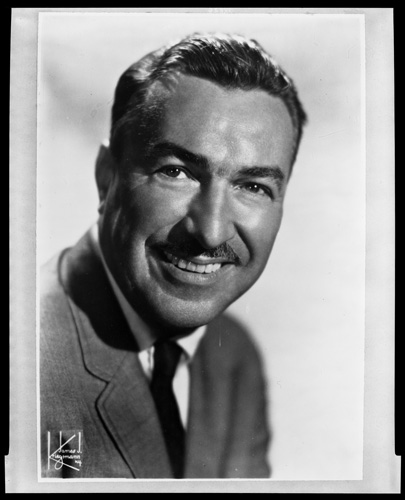SECTION 11
Voting Rights
Beginning in the 1880s, Jim Crow states had enacted state and local legislation with the purpose of barring African Americans from having a voice in politics. By setting up poll taxes and literacy requirements that were subsequently only enforced for African Americans attempting to vote, white politicians sought to maintain segregation- politically, economically, and socially. In spite of the menace of Klan violence, constant intimidation from police and employers, as well as the possibility of future retaliation, black people continued to register where they could and push for their right to vote. The mass migrations of African Americans throughout the first half of the twentieth century created black majority congressional districts in Northern areas that had none of the legalities, though many of the same sentiments, barring black voters. Northern black voters had largely shifted their political allegiances from the Republican to the Democratic Party during the Great Depression, largely due to their support for Franklin Delano Roosevelt. The 1932 presidential election was one of the first elections where candidates seriously considered the impact of the black vote. While the Democratic Party had been at the forefront of enforcing segregation, Roosevelt and his New Deal was seen in the Black community as a powerful challenge to segregation and inequality. This support would continue throughout Roosevelt’s tenure. Black northern votes for Roosevelt in the presidential election of 1944 accounted for his margin of victory over Republican New York governor Thomas Dewey in eight states, including Michigan and Maryland.
Adam Clayton Powell, Jr.
Source: Library of Congress Prints and Photographs Division, Washington, DC.
The demographic changes that had rendered a substantial Northern black voting bloc had also opened the possibilities for black elected officials for the first time since Reconstruction. In 1934, Arthur W. Mitchell of Chicago became the first black Democrat elected to Congress in American history. Ten years later, a Harlem minister and militant political activist, Adam Clayton Powell Jr., was elected to the House. Powell Jr. got his start in politics with the formation of the Greater New York Coordinating Committee on Employment. Through this organization, he planned boycotts, rallies, and protests against discrimination in hiring practices, wages and treatment of workers. After being elected to the New York City Council in 1941, he was elected to Congress in 1944. The rights for jobs and housing would be at the forefront of his tenure in Congress. The shifts in access for both black politicians and black voters were reflected in shifts in National politics.
And thus, by 1946, there were over two dozen blacks serving in state legislatures in northeastern states (New York, Massachusetts, Pennsylvania, New Jersey, and Vermont), in the Midwest (Illinois, Kansas, Nebraska), the West (California and Colorado) and even in border states (West Virginia and Kentucky). As the voting impact of newly empowered black voters became evident, white elected officials sought ways through which to draw in this new constituency. In 1945, Truman appointed a black attorney, Irvin C. Mollison, an associate judge of the U.S. Customs Court. In 1946, William H. Hastie was named governor of the Virgin Islands, and black sociologist Charles S. Johnson was appointed to the national commission advising the U.S. State Department on participation in the United Nations Education, Scientific, and Cultural Organizations (UNESCO). Ralph J. Bunche, a former socialist and co-organizer of the militant National Negro Congress in the 1930s, was named to the Anglo-American Caribbean Commission of the State Department. Across the country, blacks were participating openly in electoral politics in heretofore-unprecedented numbers. In Harlem, black Communist Party leader Benjamin J. Davis was elected to the New York City Council. By 1947, 12 percent of all voting-age blacks in the South were registered, up from only 2 percent in 1940. Blacks in the upper South—Virginia, North Carolina, and Tennessee—began to be elected in small numbers to city councils and school board posts.
By the end of President Franklin Roosevelt’s administration, blacks were becoming a significant factor in national politics and a critical constituency in many urban elections outside the South. With the growing importance of black voters and elected officials, it was hard to ignore the glaring inequities of the persistence of segregation. Both voters and legislators began to use political pressure to deny the legitimacy of segregation. By the early 1940’s Congress reflected the trend towards a more liberal to moderate segregationist policy. In 1937-38, only 10 bills that were considered favorable to desegregation and civil rights were introduced in Congress. By 1949-50, 72 bills were being proposed. One of the major victories for black elected leadership was the establishment of the Fair Employment Practices Committee. The FEPC, established during the Roosevelt Administration in July 1941, held hearings throughout the United States to promote the employment of African Americans in the war industry and to eliminate all barriers to vocational training.
Under the Truman Administration, however, the FEPC ’s ability to influence policy was severely restricted. When in 1946 Truman prohibited the committee from issuing an order to hire black workers on streetcar lines in Washington, D.C., committee member and attorney Charles Hamilton Houston resigned in protest, declaring that there was “a persistent course of conduct on the part of the administration to the matter of eliminating discrimination in employment on account of race, creed, or national origin since V-J Day, while doing nothing substantial to make the policy effective.” The FEPC was abolished by the Senate later that year.
Related Resources
Adam Clayton Powell, Jr.
Harlem minister and political activist Adam Clayton Powell, Jr. organized boycotts, rallies, and protests against discrimination in hiring practices, wages, and working conditions. In 1944, he was elected to the U.S. House of Representatives--the first black Congressman from New York, and the second in the country.
Source: Library of Congress Prints and Photographs Division, Washington, DC.


